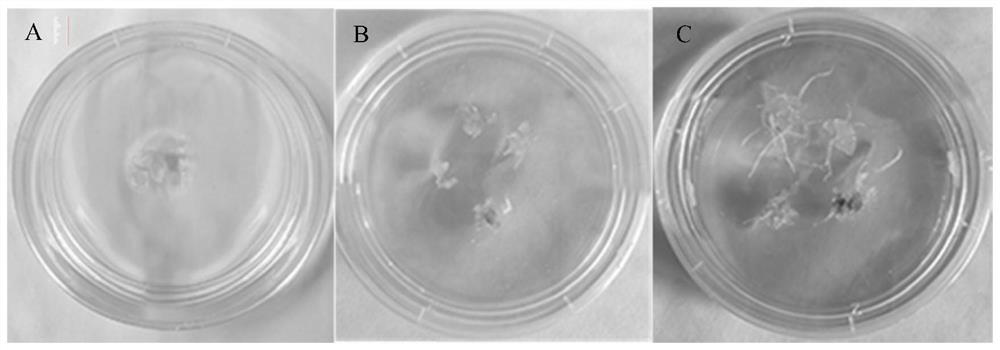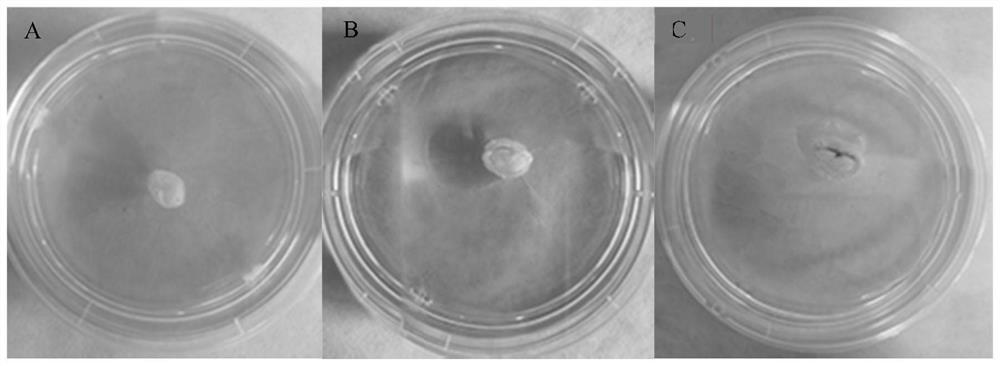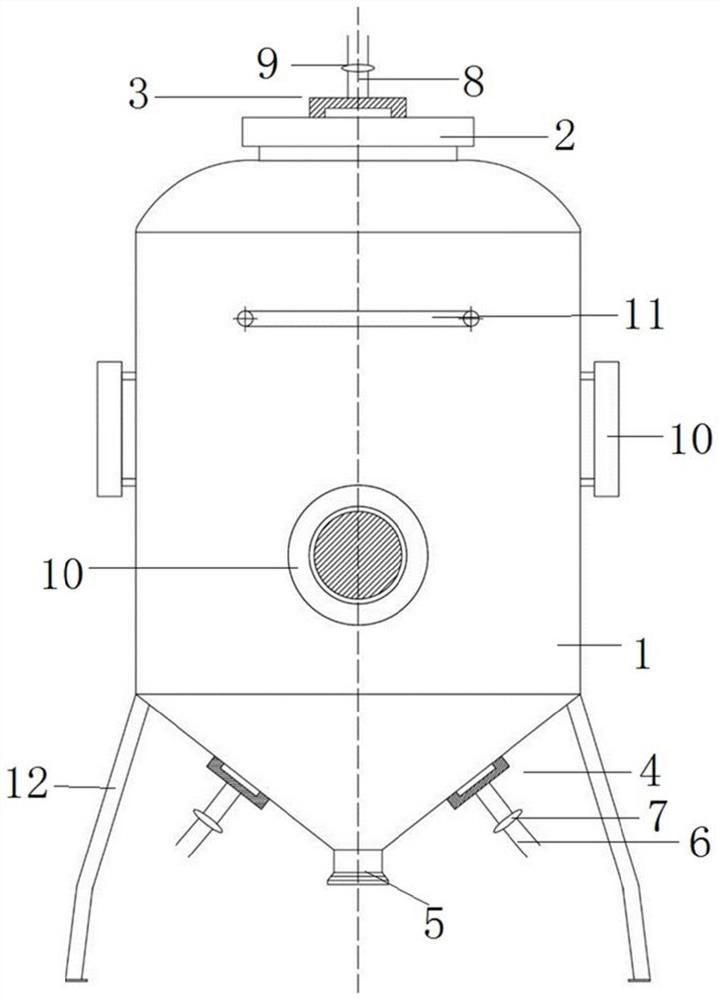Ginseng stem cell isolated culture method using biological reaction device
A biological reaction device and separation and cultivation technology, applied in the field of separation and cultivation of ginseng stem cells, can solve the problems of stem cell active ingredient content to be improved, limited division ability, weak resistance to stress, etc., to promote TCA cycle, uniform and sufficient ventilation, The effect of avoiding the generation of dedifferentiated callus
- Summary
- Abstract
- Description
- Claims
- Application Information
AI Technical Summary
Problems solved by technology
Method used
Image
Examples
Embodiment 1
[0102] In this example, the adventitious root of ginseng is prepared by one-step method and specific liquid medium culture, which specifically includes the following steps:
[0103] (1) Induction of adventitious roots
[0104] After 20-year-old wild ginseng, remove the reed head, stalk, and main root after cleaning, disinfection and sterilization, cut into thin slices with a width of 0.6cm, a length of 0.7cm and a thickness of 0.3mm, and inoculate them into induction medium, at 22±1°C Adventitious roots of wild ginseng were induced by dark culture for 4 to 5 weeks under conditions; wherein, the induction medium included 4mg / L naphthaleneacetic acid, 0.6mg / L gibberellin, 0.4mg / L kinetin, 0.1g / L citric acid, 0.05g / L L ascorbic acid, 30g / L sucrose, 3g / L Phytogel, 1.55g / L B5 medium and 1.21g / L WPM medium, pH value is 5.8.
[0105] (2) subculture of adventitious roots
[0106] Inoculate the adventitious roots of wild ginseng obtained in step (1) into the same induction medium as in...
Embodiment 2
[0111] In this example, the adventitious root of ginseng is prepared by one-step method and specific liquid medium culture, which specifically includes the following steps:
[0112] (1) Induction of adventitious roots
[0113] After cleaning, disinfecting and degerming the reed heads of 6-year-old garden ginseng, cut them into thin slices with a width of 0.5 cm, a length of 0.6 cm and a thickness of 0.3 mm, inoculate them into induction medium, and culture them in dark at 22±1°C for 4-5 days. Zhou induced adventitious roots; wherein, the induction medium included 6mg / L naphthaleneacetic acid, 0.2mg / L gibberellin, 0.4mg / L kinetin, 1.2g / L citric acid, 0.1g / L ascorbic acid, 20g / L sucrose, 5g / L plant gel, 4g / L B5 medium and 1.8g / L WPM medium, pH value is 5.6.
[0114] (2) subculture of adventitious roots
[0115] Inoculate the adventitious roots obtained in step (1) into the same induction medium as in step (1), and culture in dark under the same conditions for 4 to 5 weeks;
...
Embodiment 3
[0120] In this example, the adventitious root of ginseng is prepared by one-step method and specific liquid medium culture, which specifically includes the following steps:
[0121] (1) Induction of adventitious roots
[0122] After cleaning, disinfecting and sterilizing the horns of 10-year-old understory ginseng, cut them into thin slices with a width of 0.7 cm, a length of 0.7 cm, and a thickness of 0.5 mm, inoculate them into induction medium, and culture them in dark at 22±1°C for 4~ Adventitious roots were induced in 5 weeks; wherein, the induction medium included 5mg / L naphthaleneacetic acid, 1mg / L gibberellin, 0.1mg / L kinetin, 0.75g / L citric acid, 0.03g / L ascorbic acid, 40g / L sucrose, 4g / L Phytogel, 2g / L B5 medium and 1g / L WPM medium, pH 6.0.
[0123] (2) subculture of adventitious roots
[0124] Inoculate the adventitious roots obtained in step (1) into the same induction medium as in step (1), and culture in dark under the same conditions for 4 to 5 weeks;
[0125...
PUM
 Login to View More
Login to View More Abstract
Description
Claims
Application Information
 Login to View More
Login to View More - R&D
- Intellectual Property
- Life Sciences
- Materials
- Tech Scout
- Unparalleled Data Quality
- Higher Quality Content
- 60% Fewer Hallucinations
Browse by: Latest US Patents, China's latest patents, Technical Efficacy Thesaurus, Application Domain, Technology Topic, Popular Technical Reports.
© 2025 PatSnap. All rights reserved.Legal|Privacy policy|Modern Slavery Act Transparency Statement|Sitemap|About US| Contact US: help@patsnap.com



